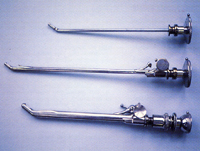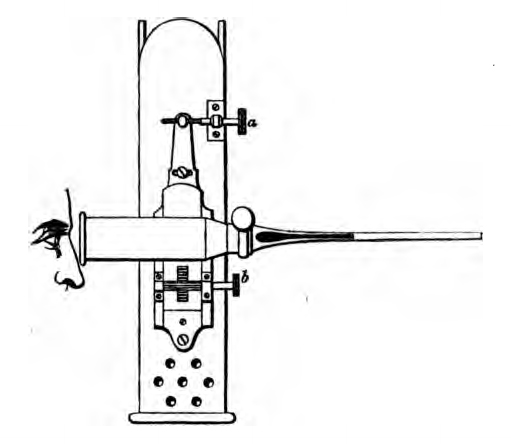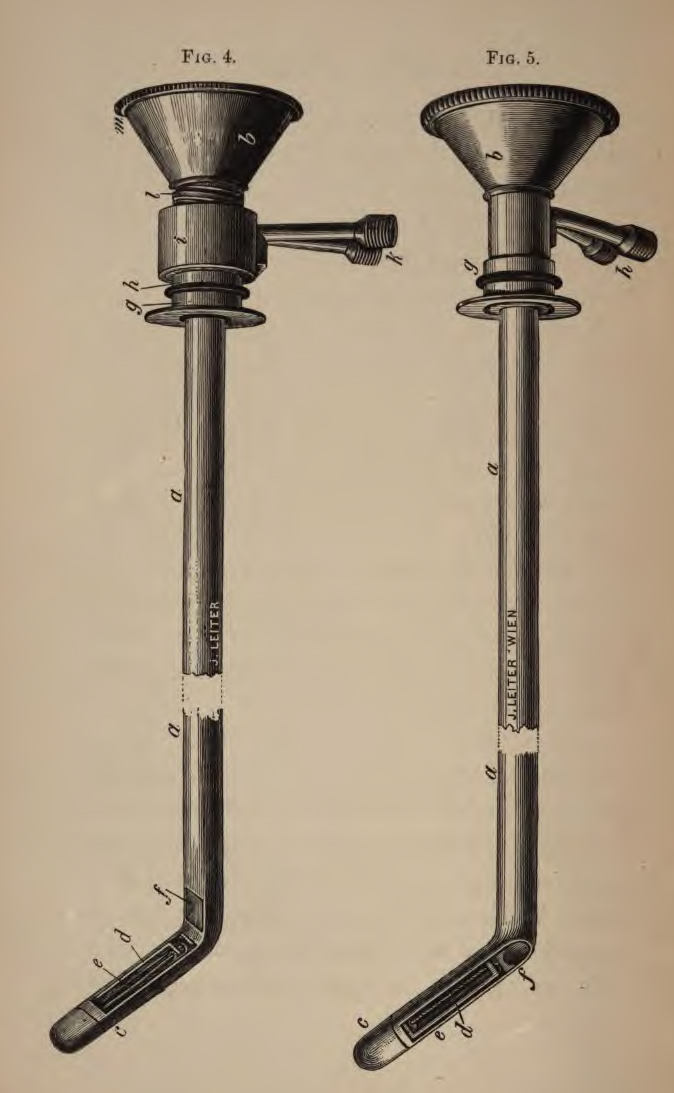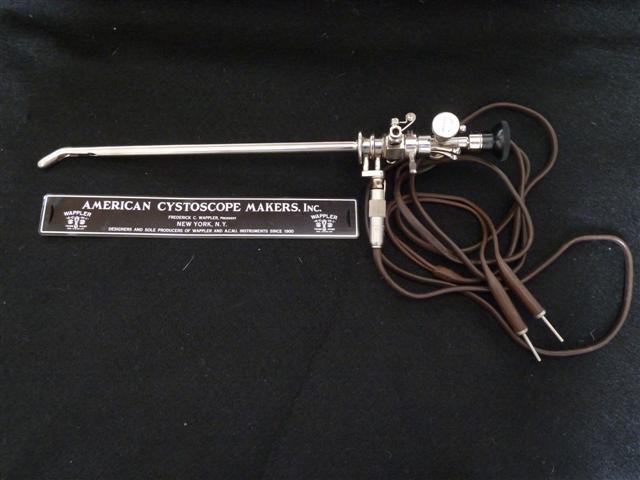From candlelight to xenon & laser light

Shining a light into the bladder, so that its reflection allowed the interior to be visualised, was the very basis of the cystoscope.
Subsequent developments in the generation, focussing and amplification of light allowed the cystoscope to progress, resulting in a safe and useable instrument.
"Hot" Light Sources
The first attempt at cystoscopy was in 1807 by Philipp Bozzini of Frankfurt. His Lichtleiter ("light conductor") consisted of a thin metal tube that allowed reflected candle light to shine into an orifice, such as the urethra. He presented it to the Academy of Medicine in Vienna. Although not really very usable, it was a start and, for the next few years, future attempts at creating a cystoscope were made along similar lines.
 In 1826, Pierre Ségalas presented a similar candle-powered reflector to the Academy of Science in Paris; he called it the “urethra-cystique speculum”.
In 1826, Pierre Ségalas presented a similar candle-powered reflector to the Academy of Science in Paris; he called it the “urethra-cystique speculum”.
Antonin Desormeaux used an alcohol lamp for his light source in 1853. Light was reflected in by a concave mirror and Desormeaux’s cystoscope was usable. He reported seeing stones and ureteroceles . This was improved by Francis Cruise in 1865 with a rack and pinion, adjustable lens (pictured diagrammatically, left).
Read more about Francis Cruise
Howard Kelly of Baltimore, USA, used reflected light, via an ENT head mirror, to illuminate the bladders of female patients via his vesical speculum.

Max Nitze realised, however, that the light source had to be in the bladder. He used a heated platinum wire and had an instrument made by Diecke in Dresden in 1877. It was too hot, needed water cooling and kept burning out. A better model (pictured right) was made for Nitze by Leiter, an instrument maker in Vienna in 1879. Although much better, it was still too hot.
"Cold" Light Sources
The problem of the hot light source was solved in 1880 by Edison’s invention of the incandescent light bulb. This was first used in a cystoscope by David Newman of Glasgow, but, like Kelly’s, could only be used in women.
In 1887, Hartwig of Berlin and Leiter of Vienna both used Edison’s bulbs with Nitze’s cystoscope.
The next improvement in illumination was the mignon lamp invented by Charles Preston of New York. This allowed smaller calibre instruments to be made.

In 1899, F Tilden Brown of Baltimore used two different lens systems to visualise the bladder; they could be swapped over using the same sheath to prevent re-instrumentation of the urethra. Leo Buerger expanded on this idea of passing different instruments down the same outer sheath and the Brown-Buerger cystoscope (pictured left), introduced in 1907, became a standard instrument for years.
Fibre-Optic Light Sources
During the 1950’s and 60’s, Harold Hopkins developed fibre-optic light transmission and the rod lens. The German instrument maker Karl Storz combined these ideas leading the way with the modern cystoscope; this was presented at the SIU in Munich in 1967.
Read more about Harold Hopkins
← Back to Bladder